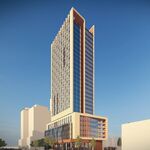denfromoakvillemilton
Senior Member
Member Bio
- Joined
- Apr 30, 2008
- Messages
- 7,491
- Reaction score
- 1,551
- Location
- Downtown Toronto, Ontario
I'm Glad when the eglinton extension to pearson is built this will be all over!






